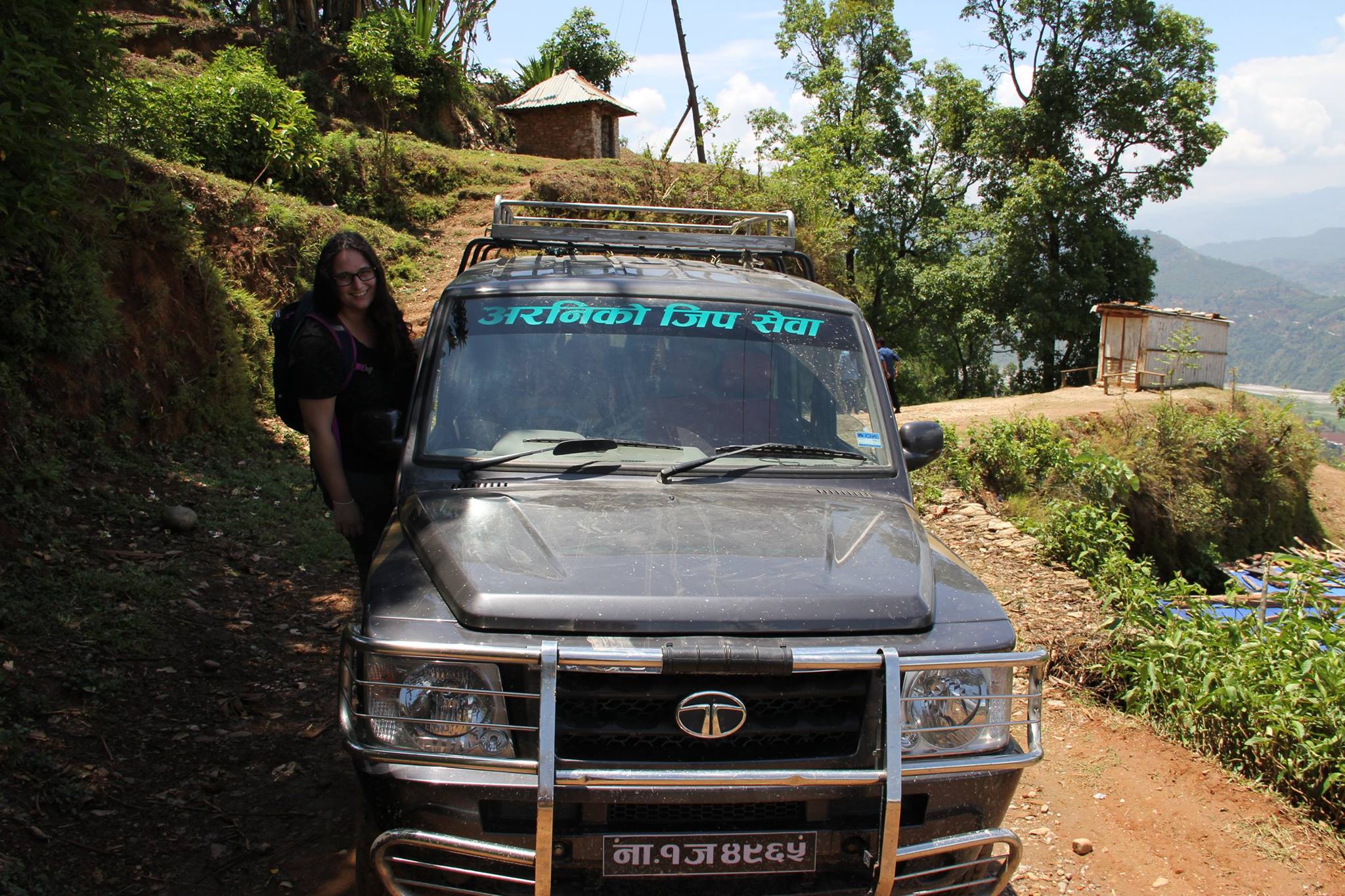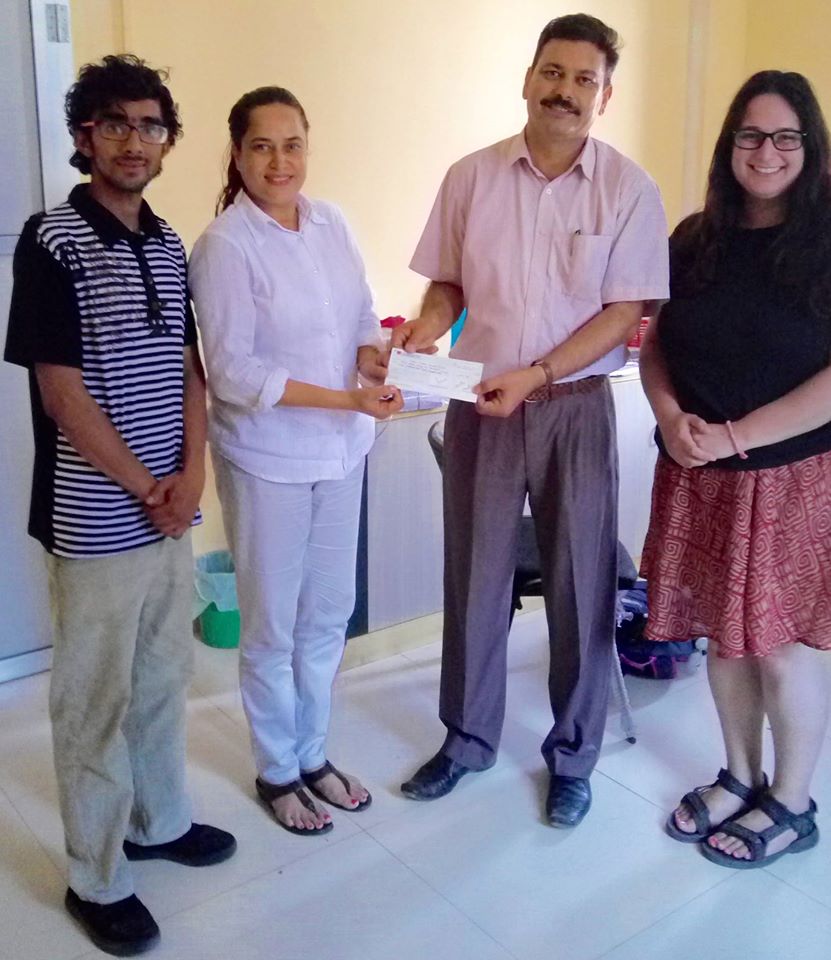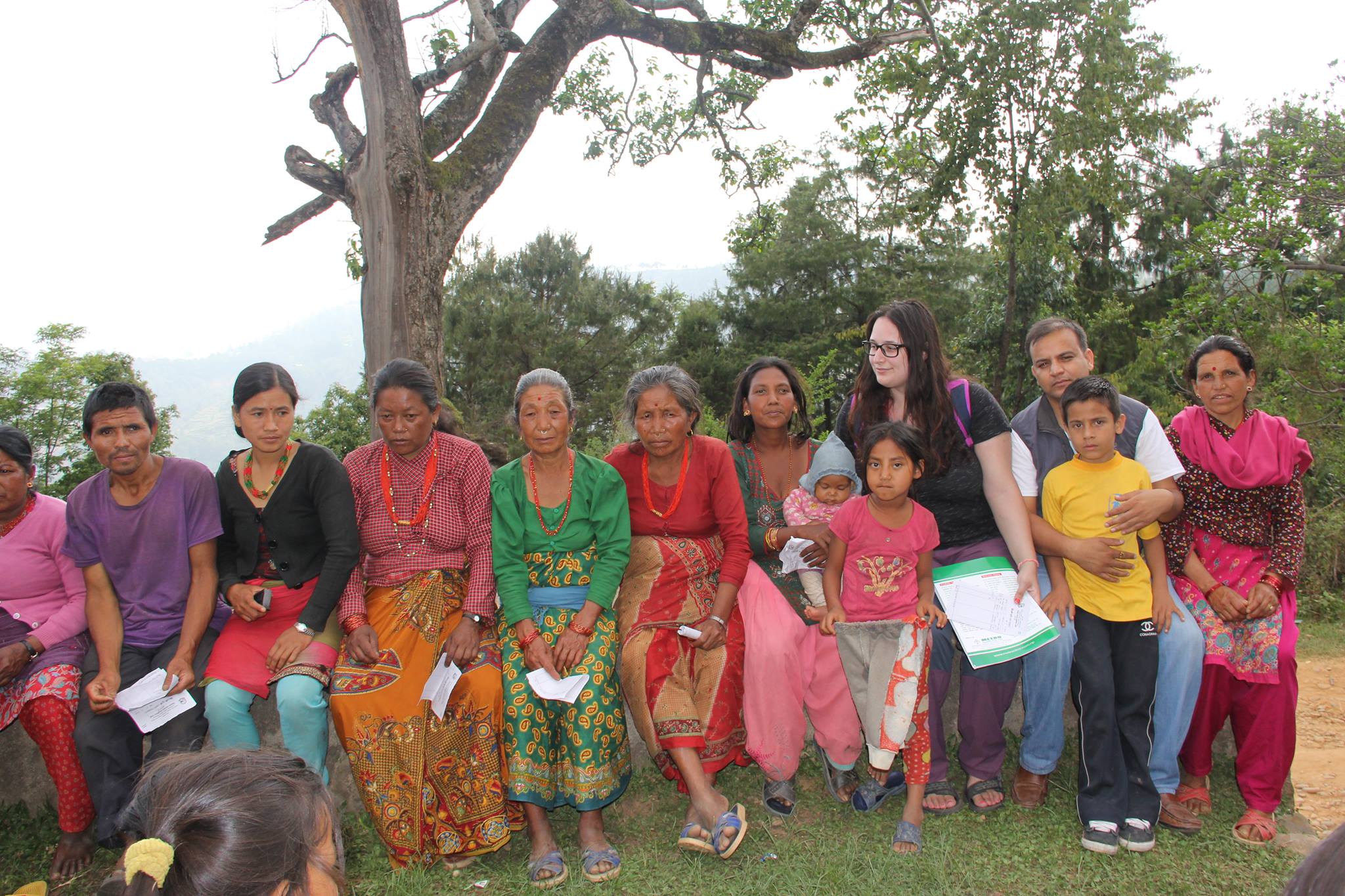By: Marla Borkson
Nepal always has and always be a fascinating place for me. I lived here for five months last year with an INGO focused on education and the Nepal government’s new curriculum for early childhood development. So when I heard about the April 25 earthquake, I knew I had to change my summer plans to head to this country I so dearly love. Since this is not my first time here, I already somewhat had of a grasp on the language, food, people, and nuanced culture.
But when I arrived in Nepal in early May, I was surprised by what the earthquake did. I was expecting mass destruction as the Western media portrayed it. Crumbled buildings, people crying, complete lack of mobility. Yet, things were functioning fairly well, given the circumstances. The same tempos swirled by while the handlers yelled with piles of cash in their hand. Older women in tucked saris still sold burnt corn squatting on the street side. Lemon soda carts pushed by young men rattled by with the lemons perfectly balanced on the glass. Street dogs growled. Children plucked plastic from the streets into towering burlap sacks. People were out and about yet the aura was different. People were solemn and not nearly as lively as my last trip. You see, almost everyone in Kathmandu isn’t actually from Kathmandu with the exception of a few native Newaris. Everyone hailed from a village- whether it be from the Terai, the Hilldevi, or the mountains. And that means that someone’s mother, father, cousin, aunt, uncle or best friend was inevitably left behind when the 7.9 magnitude earthquake hit. Almost all of my Nepali friends named someone hurt. My friend’s husband was stuck in Dolkha, one of the worst affected villages with a broken leg and due to the road conditions and mass landslides from aftershocks he could not return to the city for treatment. Another friend had seven family members die when their house collapsed in another village near Pokhara. The list of injuries and casualties is endless and affects even those who were lucky enough to only suffer minor cuts and bruises.
On my first day with the America Nepal Medical Foundation [ANMF], with severe jetlag from 2 days of flying and no sleep, I went directly to Metro Hospital, the headquarters of the mission. Metro is a five story private hospital near the American Embassy where ANMF conducts most of its work in Nepal. Commotion was everywhere, doctors running back and forth, patients with large files, an entire room dedicated to act as a warehouse filled with commodities and medicine like rice, antibiotics, and tents. Within minutes of arriving, Jyoti, my beautiful and fierce boss sat me down with a massive book filled to the brim with receipts in Nepali and a few in English. Reconciling the accounts with the help of some others, we slowly matched numbers to supplies, who needed what, which organizations to partner with, and how to deal with the government. All of the processes are incredibly complicated and cumbersome, but it was a busy and rewarding first day, to say the least.
 ANMF has been going to the villages with community medical boxes filled with supplies for a mobile pharmacy and additional supplies for the local health post. When the earthquakes first happened, doctors were taking helicopters to remote regions in the Himalayas in order to deliver necessary aid. Now that things have slowed down, jeeps are being taken to closer more accessible places that need more acute care. I was asked to join some of these trips to the health camps to assist in documentation.
ANMF has been going to the villages with community medical boxes filled with supplies for a mobile pharmacy and additional supplies for the local health post. When the earthquakes first happened, doctors were taking helicopters to remote regions in the Himalayas in order to deliver necessary aid. Now that things have slowed down, jeeps are being taken to closer more accessible places that need more acute care. I was asked to join some of these trips to the health camps to assist in documentation.
The first trip I took was to Phulbari, Kavre. The team consisted of 6 doctors, a nurse, the jeep driver, and me. We drove for close to three and half hours on the impossible, yet stunning, Himalayan roads. This place had special meaning to one of the doctors I was working with; it was his childhood village and he grew up here until he was 16. It was a bittersweet homecoming of sorts, he pointed out his damaged house, but once we reached the crowd it was clear he was missed. His old school teacher cheerily hugged him and his father smiled proudly from afar. Soon after greetings, the team got to work. We set up in a grassy area outside of a temple and the pharmacy was made in a little nook in the shade. A total of 155 people crowded gathered and shoved papers at me as I documented their names, ages, and gender. People had a range of issues from gastric complications to cuts, to emotional trauma. Although it was difficult to see people suffering, it was gratifying knowing a whole community will be okay.
A week later, I joined on another mission to an even more remote part of Kavre. I was told this trip would be more difficult as this area was badly hit with the second earthquake, a 7.3 magnitude quake that hit May 12, and the village was completely damaged. Additionally, this village is on the boarder of Sindhupalchowk, another badly damaged region, and many people from there have now set up camp in Kavre. After many hours of traveling far into the Himalayas we arrived at our destination. Although this trip was much more organized than the first, our work station was a badly damaged school. Student chairs were cracked in half and notebooks were scatted amongst the rubble. I found a large poster made by a middle school class and a textbook damaged from the rain and debris. We got to work once again, this time with the local Kantipur station interviewing us, and treated close to 200 people.
It is hard to properly describe a remote Nepali village to someone who has never been there. People are not used to seeing foreigners and I am sometimes treated as a novelty of sorts. The women here wear the most splendid clothes ranging from Korta to Sari to dresses and they look elegant no matter the circumstances. Ethnic groups are sometimes easily ‘decoded’ based off their colorful garb or elaborate piercings. For example, the first village I visited was mainly Tamang – visually noticeable because of the distinctive bull nose piercing all women dawned. I am fortunate – I was welcomed warmly in these communities and allowed to take photographs. I will forever cherish my time in these villages.


